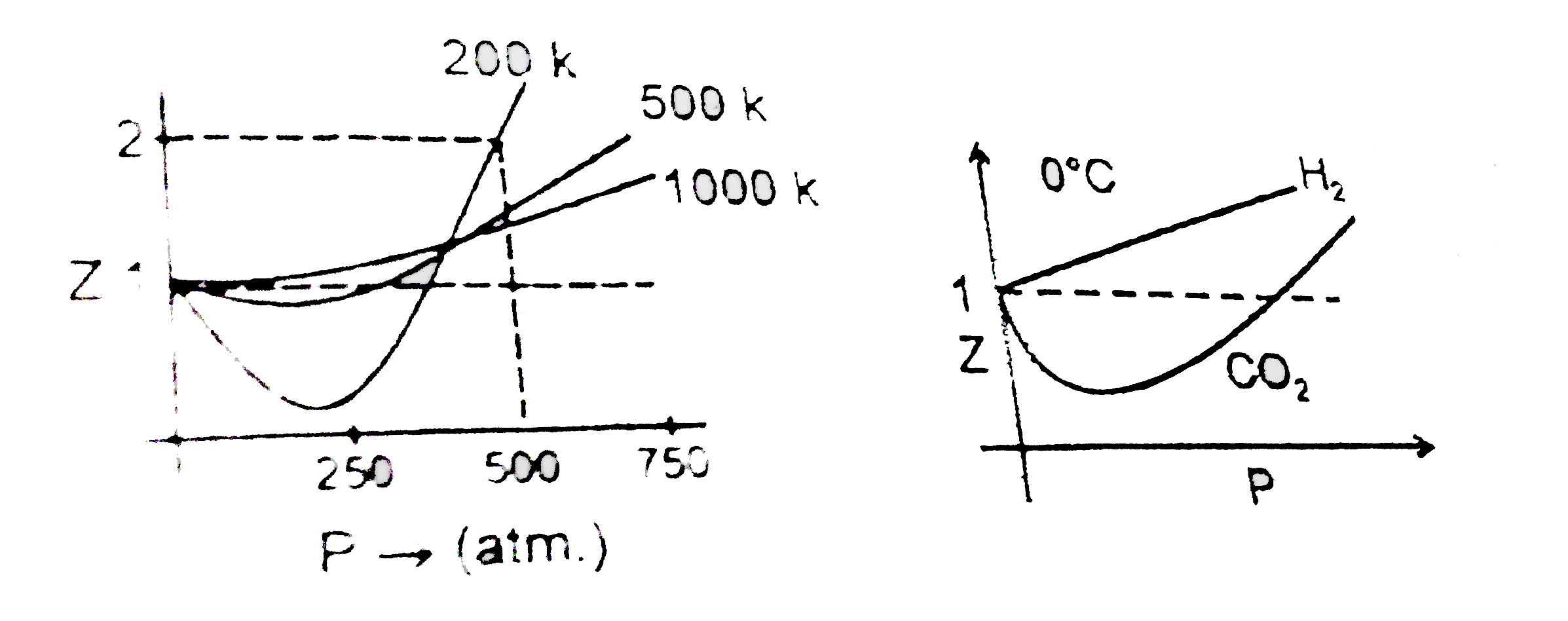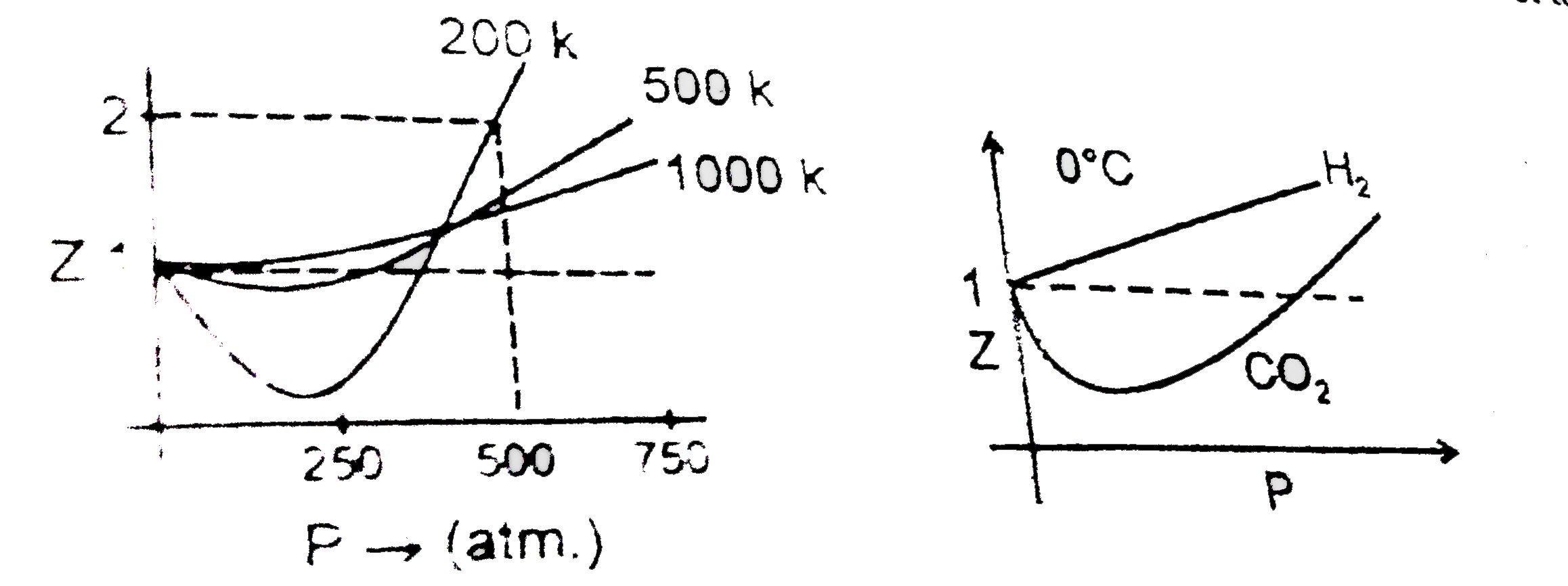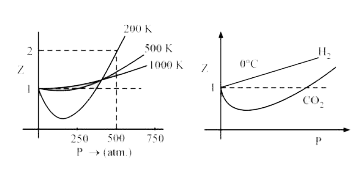The values of critical pressure (Pc) and critical temperature (Tc) for O2,Cl2,H2 and He are given below. The gas which has smallest value of Vander Waal's constant b'is

O2
Cl2
H2
He
The correct Answer is:D
Step by step video & image solution for The values of critical pressure (Pc) and critical temperature (Tc) for O_2, Cl_2, H_2 and He are given below. The gas which has smallest value of Vander Waal's constant b'is by Chemistry experts to help you in doubts & scoring excellent marks in Class 12 exams.
Updated on:21/07/2023Topper's Solved these Questions
- STATES OF MATTERBOOK - VMC MODULES ENGLISHCHAPTER - STATES OF MATTEREXERCISE - EFFICIENT
45 Videos
- STATES OF MATTERBOOK - VMC MODULES ENGLISHCHAPTER - STATES OF MATTEREXERCISE - IMPECCABLE
50 Videos
- STATES OF MATTERBOOK - VMC MODULES ENGLISHCHAPTER - STATES OF MATTEREXERCISE - IMPECCABLE
50 Videos
- SOME BASIC CONCEPTS OF CHEMISTRYBOOK - VMC MODULES ENGLISHCHAPTER - SOME BASIC CONCEPTS OF CHEMISTRYEXERCISE - IN - CHAPTER EXERCISE - H
8 Videos
- STATES OF MATTERBOOK - VMC MODULES ENGLISHCHAPTER - STATES OF MATTEREXERCISE - IN-CHAPTER EXERCISE-I
10 Videos
Similar Questions
Value of vander Waal's constants a and b for a gas depends upon :
View SolutionThe critical temperature (Tc) and pressure (Pc) of NO are 177K and 6.48MPa, respectively, and that of Cl4 are 550K and 4.56MPa, respectively. Which gas (a) has the smaller value for the van der Waals constant b, (b) has the smaller value for constant a, (c) has the larger critical volume, and (d) is most nearly ideal in behaviour at 300K and 1.013MPa.
View SolutionThe value of critical temperature in terms of van der Waals' constants a and b is given by
View SolutionThe value of critical temperature in terms of van der Waals' constants a and b is given by
View SolutionThe essential conditions for liquefaction of gases were discovered by Andrews in 1869 as a result of his study of pressure-volume-temperature relationship for CO2 . It was found that above a certain temperature, it was impossible to liquefy a gas whatever the pressure was applied. The temperature below which the gas can be liquefied by the application of pressure alone is called critical temperature (Tc). The pressure required to liquefy a gas at this temperature is called the critical pressure (Pc). The volume occupied by one mole of the substance at the critical temperature and pressure is called critical volume. Critical constants are related with van der waals' constant as follows:
Vc=3b,Pc=a27b2,Tc=8a27Rb
The values of critical volumes of four gases A, B, C and D are 0.025L, 0.312L, 0.245L and 0.432L respectively. The gas with larger molecular diameter will be :
View SolutionThe critical temperature (Tc) and critical pressure (pc) of CO2 are 30.98∘C and 73 atm respectively. Can CO2(g) be liquefied at 32∘C and 80 atm pressure ?
View SolutionConsider the following statements and arrange in the order of true/false as given in the codes.
The correct order of True/False of the following statements is :
S1:Rate of diffusion and effusion of a gas increases by increasing the pressure and decreasing the temperature.
S2:An ideal gas has vander waal's constant a and b equal to zero.
S3:If an ideal gas is expanded adiabatically against a constant pressure then TVγ−1=constant
View SolutionSketch shows the plot of Z v/s P for a hypothetical gas for one mole at three distint temperature.

Boyle's temperature is the temperature at which gas shows ideal behaviour over a pressure range in the low pressure region.Boyle's temperature (Tb)=aRb.If a plot is obtained at temperature well below Boyle's temperature then the curve will show negative deviation, in low pressure region and positive deviation in the high pressure region. Near critical temperature the curve is more likely as CO2 and the temperature well above critical temperature curve is more like H2 at 0∘C as shown above.At high pressure suppose all the constant temperature curve varies linearly with pressure according to the following equation : Z=1+PbRT (R=2calmol−1K−1)
Which of the following is correct :
View SolutionSketch shows the plot of Z v/s P for a hypothetical gas for one mole at three distint temperature.

Boyle's temperature is the temperature at which gas shows ideal behaviour over a pressure range in the low pressure region.Boyle's temperature (Tb)=aRb.If a plot is obtained at temperature well below Boyle's temperature then the curve will show negative deviation, in low pressure region and positive deviation in the high pressure region. Near critical temperature the curve is more likely as CO2 and the temperature well above critical temperature curve is more like H2 at 0∘C as shown above.At high pressure suppose all the constant temperature curve varies linearly with pressure according to the following equation : Z=1+PbRT (R=2calmol−1K−1)
For 500 K plot value of Z changes from 2 to 2.2 if pressure is varied from 1000 atm to 1200 atm (high pressure ) then the value of bRT will be
View SolutionSketch shows the plot of Z vs P for 1 mol of a hypothetical gas at three distinct temperature.

Boyle’s temperature is the temperature at which a gas shows ideal behaviour over a pressure range in the low pressure region. Boyle’s temperature (Tb)=aRb. If a plot is obtained at temperatures well below Boyle’s temperature then the curve will show negative deviation, in low pressure region and positive deviation in the high pressure region. Near critical temperature the curve is more like CO2 and the temperature well above critical temperature curve is more like H2 as shown above. At high pressure suppose all the constant temperature curve varies linearly with pressure according to the following equation: Z=1+PbRT(R=2calmol−1K−1)
For 500 K plot the value of Z changes from 2 to 2.2 if pressure is varied from 1000 atm to 1200 atm (high pressure) then the value of bRT will be :
View Solution
